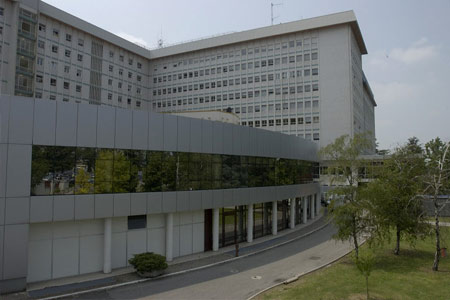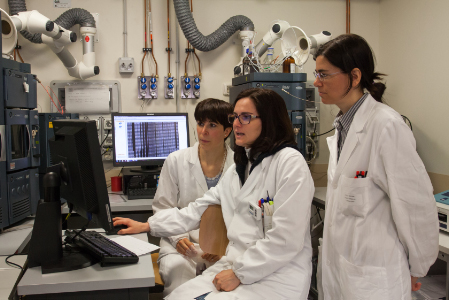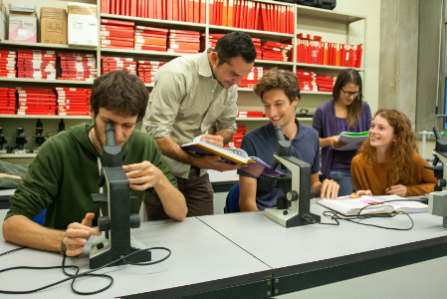CD4+CD25+ regulatory T cells (Tregs) participate in immunologic homeostasis by suppression of inappropriate immune responses and are able to inhibit a variety of autoimmune and inflammatory diseases. In order to prevent autoimmunity, it is believed that Tregs act in three separate tissues: thymus, lymphoid organs and peripheral sites. However, the mechanisms of action of Treg cells involved in the regulation of experimental autoimmune encephalomyelitis (EAE) are not well understood and the effect of Tregs on T cell behavior in the central nervous system (CNS) has never been previously studied. Owing to its intrinsic optical sectioning properties, two-photon-excited fluorescence laser scanning microscopy (TPLM) has become the principal technique for high-resolution imaging of cell behavior in vivo. Our previous
TPLM results reveled that in the absence of Tregs, auto-reactive T cells undergo to a reduction in velocity forming prolonged interactions with DCs in the lymph nodes (LNs) after active immunization for EAE induction. Moreover, we obtained preliminary results showing an increased T cell motility in the presence of Tregs and a reduction of contact period between T cells and antigen-presenting cells (APCs) in LNs. Whereas T cell dynamics in the LNs has been investigated in several studies in recent years, T cell motility
behavior inside CNS parenchyma and how Treg cells impact T cells in the spinal cord of EAE mice is largely unknown. The MAIN GOAL of this pilot project is to study the effect of Tregs on the suppression of autoimmune reactions in the CNS. By using TPLM technologies we will investigate the motility behavior of adoptively transferred fluorescent-labeled antigen-specific Th1 and Th17 cells in presence of Tregs in mice immunized with myelin-oligodendrocyte glycoprotein (MOG) 35-55 peptide during different phases of disease. In order to understand if myelin antigen specificity by Tregs is required in inflamed CNS we will assess the modulation of motility behavior of MOG-specific Th1 and Th17 cells by MOG-specific Tregs comparing to OVA-specific and/or polyclonal Tregs. Using a TPLM approach we will also investigate the impact of exogenous Tregs on T cell/APC contacts in spinal cord at different phases of EAE. In order to investigate the types of APCs able to establish contacts with MOG-specific Th1 and Th17 cells, we will perform TPLM assays using three different experimental models of APCs: a) CD11c-GFP/+ transgenic mice, b) MHC-IIGFP/+ transgenic mice and c) in vivo fluorescent labeled perivascular/meningeal phagocytes. We will also correlate the effect of Treg cells on T cell/APC contacts by performing in vivo proliferation assays. Overall our project will generate fundamental knowledge to the understanding of Treg activity in the CNS and will give indications on the potential usage of Tregs in patients with MS.







